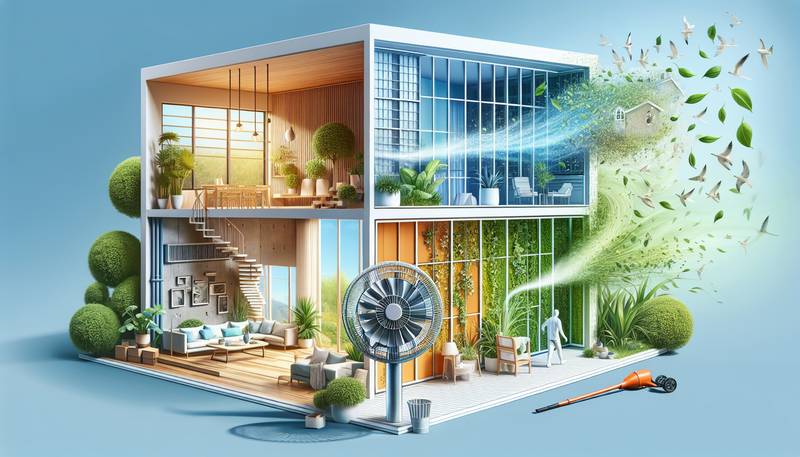Bringing the Outside In: Natural Ventilation Techniques for Your Spacesubmitted on 6 June 2025

When Fresh Air Meets DesignA well-ventilated room is like a well-cooked soufflé—it can rise to great heights or fall flat in seconds. Achieving the perfect balance of airflow can be a challenge, especially when the only breeze you feel is from your neighbor's overzealous leaf blower. Thankfully, natural ventilation techniques offer a breath of fresh air, literally, into both residential and commercial structures. They allow nature to do the heavy lifting, ensuring that your living space is as pleasant as a summer picnic—minus the ants.The Basics of Natural VentilationNatural ventilation relies on the whims of Mother Nature and the strategic design of your space. Unlike its mechanical counterpart, which can be more high-maintenance than a diva in a reality show, natural ventilation capitalizes on wind currents, temperature differentials, and even the occasional flutter of a butterfly. Here's how it generally works:- Cross Ventilation: Openings on opposite sides of a room invite fresh air to waltz through, creating a delightful draft. It's like letting your house participate in a game of air tag—only no one gets caught, and everyone leaves feeling refreshed.
- Stack Ventilation: Hot air, like your uncle during holiday dinners, tends to rise. This technique uses that principle to create an upward flow of air, drawing in cooler air from below. Trust me, cooler is the way to go—no one wants to rekindle the infamous “that was too spicy” debate of last Thanksgiving.
- Natural Infiltration: This is the less glamorous but equally effective option that makes use of any slight cracks or openings. It's like nudging open a window to let in that lovely spring breeze while simultaneously questioning whether you really want to be responsible for cleaning the dust bunnies under the couch.
Designing for AirflowEffective natural ventilation is all about layout and design—think of it as a carefully choreographed dance between air and architecture. But don’t worry! You don’t need to take dance classes for this. Here are some design strategies that will have your air moving smoother than a waltz:- Window Placement: Positioning windows for optimal airflow is crucial. If your windows are like teenagers on a Saturday night—closed off and unwilling to budge—there’s no chance of fresh air entering your home.
- Open Floor Plans: Embracing an open layout can enhance airflow. It’s like letting your puppy run wild in the park—everything flows more freely when there's room to roam.
- Ventilation Shafts: If you're designing a large commercial space, consider ventilation shafts. They’re the unsung heroes that guide the airflow through your building like a tour guide on an ambitious outing.
Pros and Cons of Natural VentilationNatural ventilation is like that friend who brings snacks to the party but sometimes has a tendency to show up uninvited. Here’s a no-nonsense look at the benefits and drawbacks:- Pros:
- Energy Efficiency: It’s like having your cake and eating it too—fresh air without the hefty utility bills.
- Improved Air Quality: Fresh air can work wonders for both physical and mental health. Think of it as your personal emotional support breeze.
- Environmental Impact: Reducing reliance on mechanical systems makes Mother Earth smile—not a bad perk!
- Cons:
- Weather Dependency: When the winds are as fickle as a cat’s mood, you may find your interior climate less than ideal.
- Contaminants: Open windows can also invite in pollutants. It’s like saying yes to the pizza delivery guy when you meant to call for a salad.
- Privacy Concerns: If you live in a busy area, an open window can turn your home into a stage for onlookers. Not exactly what you had in mind for your cozy evening.
Finding Balance in NatureImplementing natural ventilation techniques is like finding the perfect blend of coffee—too much or too little can leave you jittery or lethargic. The key is to strike a balance that facilitates airflow while maintaining comfort and efficiency. With the right design and strategic placement, your space can transform into a haven that feels inviting every day of the year. Just remember, leaning on nature to ventilate your home could save you energy, improve air quality, and maybe even let you enjoy a peaceful cup of coffee without that pesky leaf blower. After all, a well-ventilated space is one where both you and the air can breathe easy and feel right at home.
|
|







